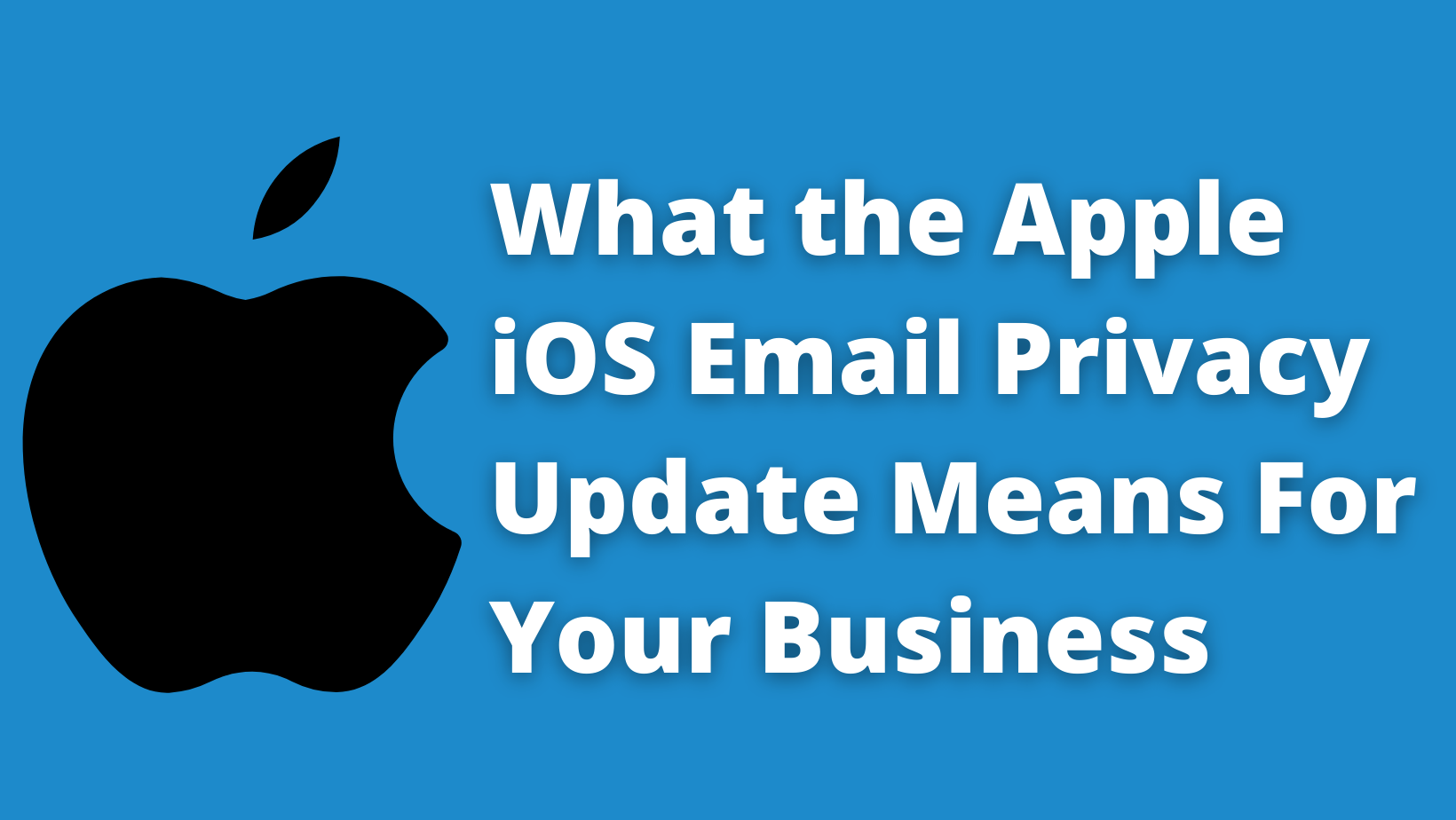Apple’s iOS 15 email privacy updates are revolutionizing how email marketers pull data. Data allows us to figure out what’s working and what’s not. With the new updates, email open rates will be impacted in a big way.
There’s no need to panic, but it’s important to understand how the new update will influence your email marketing strategy. Apple’s privacy updates apply to their infamous Mail app and impact data regardless of your preferred email marketing platform. Open rates and location data are the main data sources affected.
Email Privacy Protection
As Apple cracks down on its Mail Privacy Protection (MPP) options, consumers have the choice of withholding whether they do or don’t open their emails (open rates). For email marketers, this means we have less data to analyze the habits of our audience.
Announced in June 2021, Apple upgraded their privacy settings with the release of iOS 15, making it easier for iPhone users to regulate the use of their personal data. MPP protects data from third parties and hides IP addresses, preventing the linkage of online activity to determine a user’s location. This feature is active on Apple’s Mail app for the iPhone, iPad, Apple watch, and Mac computers, after users have opted in.
Previously, data was sent over from an email immediately when opened by the recipient. The data detailed whether the email was opened, on what device, and often the recipient’s location. The key takeaway, email open rates are no longer a reliable email performance metric.
Why It’s Important
Apple Mail is the default mail application for all Apple devices and accounts for 52% of all email opens, according to Litmus. Apple rolled out MPP for all Apple Mail users on September 20, 2021. Nine times out of 10, consumers will opt to protect their privacy.
Email features you may have relied on previously could be impacted due to inaccurate email open data. One example entails auto-sending a follow-up email to a recipient who didn’t open your initial email.
If 52% of your email list uses Apple Mail, it’s projected that 96% of them will elect to employ the MPP feature. Thus, half of your current email subscribers will skew email open rate data, making this an utterly unreliable metric. You can expect to see your open rates increase.
How Your Email Marketing Strategy Is Affected
Regardless of your preferred email platform, MPP will impact the email marketing industry as a whole. You can expect your email open rates to increase as a result of Apple automatically marking emails as opened on behalf of their users. But, open rates are no longer dependable as a key performance metric.
A click-to-open rate (CTOR) contrasts the number of unique clicks to unique opens, indicating an email’s effectiveness and ability to get consumers to click. CTOR is a result of email opens, so MPP will cause your CTOR rates to drop drastically. But, MPP won’t impact total clicks.
Previously, audience engagement was determined by how often recipients opened your emails. But, you’re likely to see an abnormally large surge of audience members with high engagement.
Open rates play a part in the segmentation of an email list, ranking subscribers from maximum to least engagement, again based on how often subscribers open emails. Rather than basing email segmentation off how often contacts open your emails, base it off of how often subscribers click links within your emails.
Some email platforms, HubSpot included, can set up an automated email series, which will trigger depending on whether or not a user opened an earlier email. Since Apple Mail records an artificial open rate, you may consider using an email click as a trigger in an automated email series.
Traditionally, A/B subject line testing functions on open rates when two versions of the same email are deployed to a small section of your contact list, complete with two differing subject lines. The subject line with the higher open rate is regarded as more effective, but it’s now unreliable with Apple’s MPP update. Consider basing A/B testing around click rates.
As privacy regulations increase, marketers will have less access to consumers’ personal data and habits. With artificial open rates, we won’t know the time an email was opened, the device an email was opened on, and the geographical location in which the email was opened.
Despite Apple’s MPP update, email continues to have the highest ROI, generating $42 for every $1 spent, out of all marketing channels. At the end of the day, the overarching goal of email marketing is to drive sales and increase the bottom line while targeting new customers and sustaining engagement with your current email list.

